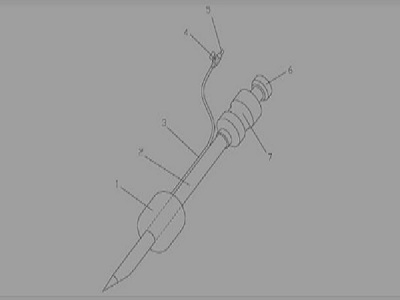We use sterilized needles to puncture the skin, intercostal tissue and parietal pleura into the pleural cavity, which is called thoracic puncture.
Why do you want a chest puncture? First of all, we should know the role of thoracic puncture in the diagnosis and treatment of thoracic diseases. Thoracocentesis is a common, convenient and simple method of diagnosis and treatment in the clinical work of pulmonary department. For example, through examination, we found that the patient had pleural effusion. We can draw the fluid through pleural puncture and conduct various examinations to find the cause of the disease. If there is a lot of fluid in the cavity, which compresses the lungs or accumulates fluid for a long time, the fibrin in it is easy to organize and cause two layers of pleural adhesion, which affects the respiratory function of the lungs. At this time, we also need to puncture to remove the fluid. If necessary, drugs can also be injected to achieve the purpose of treatment. If the pleural effusion is caused by cancer, we inject anti-cancer drugs to play an anti-cancer role. If there is too much gas in the chest cavity, and the pleural cavity has changed from negative pressure to positive pressure, then this operation can also be used to reduce the pressure and extract the gas. If the patient's bronchus is connected with the pleural cavity, we can inject a blue drug (called methylene blue, which is harmless to human body) into the chest through the puncture needle. Then the patient can cough up blue liquid (including sputum) when coughing, and then we can confirm that the patient has bronchopleural fistula. Bronchopleural fistula is a pathological passage established due to the involvement of lung lesions in bronchi, alveoli and pleura. It is a passage from oral cavity to trachea to bronchi at all levels to alveoli to visceral pleura to pleural cavity.
What should be paid attention to in thoracic puncture?
When it comes to thoracic puncture, many patients are always afraid. It's not as easy to accept as a needle hitting the buttocks, but it pierces the chest. There are hearts and lungs in the chest, which can't help but be afraid. What should we do if the needle is punctured, will it be dangerous, and what should doctors pay attention to? We should know what patients should pay attention to and how to cooperate well. According to the operating procedures, there is almost no danger. Therefore, we believe that thoracocentesis is safe without fear.
What should the operator pay attention to? Each of our doctors should have a good grasp of the indications and operating essentials of thoracic puncture. It should be noted that the needle must be inserted at the upper edge of the rib, and never at the lower edge of the rib, otherwise the blood vessels and nerves along the lower edge of the rib will be injured by mistake. Disinfection must be done carefully. The operation must be absolutely sterile. The patient's work must be done well to avoid anxiety and nervous state of mind. Close cooperation with the doctor must be obtained. When receiving the operation, the patient's changes must be observed at any time, such as cough, pale face, sweating, palpitations, syncope, etc. If necessary, stop operation and immediately lie in bed for rescue.
What should patients pay attention to? First of all, patients should be prepared to work closely with doctors to eliminate fear, anxiety and tension. Second, patients should not cough. They should stay in bed well in advance. If they feel unwell, they should explain to the doctor so that the doctor can consider what to pay attention to or suspend the operation. Third, you should lie down for about two hours after the thoracentesis.

In the treatment of pneumothorax mentioned in the emergency section of the pulmonary department, if we encounter a patient with pneumothorax, the lung compression is not serious and breathing is not difficult after inspection. After observation, the lung does not continue to be compressed, that is, the gas in the chest does not further increase. Such patients may not necessarily be treated by puncture, intubation and drainage. As long as a slightly thick needle is used to puncture, remove the gas, and sometimes repeatedly for several times, the lung will re expand, which will also achieve the purpose of treatment.
Finally, I would like to mention lung puncture. In fact, lung puncture is the penetration of thoracic puncture. The needle is punctured into the lung through the pleural cavity and through the visceral pleura. There are also two purposes. They are mainly to conduct a biopsy of the lung parenchyma, further examine the fluid in the cavity of the aspiration cavity or the bronchial tube to make a clear diagnosis, and then treat some diseases through lung puncture, such as aspirating the pus in some cavities with poor drainage, and injecting drugs when necessary to achieve the purpose of treatment. However, the requirements for lung puncture are high. The operation should be more careful, careful and fast. The time should be shortened as far as possible. The patient should cooperate closely. The breathing should be stable, and no cough should be allowed. Before the puncture, the patient should receive a detailed examination, so that the doctor can correctly locate and improve the success rate of the puncture.
Therefore, as long as the doctors follow the operation steps and operate carefully, the patients will eliminate their fears and cooperate closely with the doctors. Thoracic puncture is very safe, and there is no need to be afraid.
Post time: Oct-18-2022





